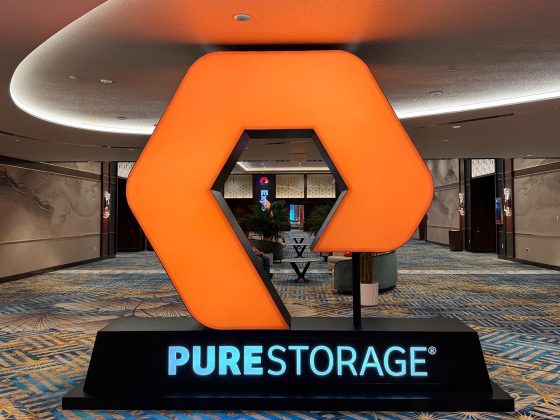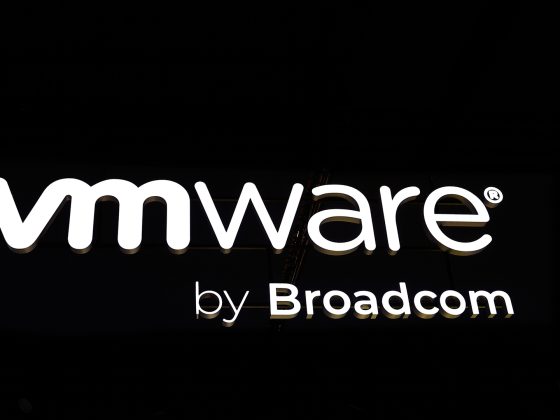Although Kubernetes is a powerful container orchestration platform, its complexity and its adoption makes it a prime target for security attacks. We’ll go over some of the best practices for securing the Kubernetes deployments and keeping applications and data safe in this article.
This article is only about pods or deployments; I intend to cover other security related topics in subsequent articles.
From our partners:
Below is a list of settings and configurations that can be implemented to accomplish the intended goal.
- securityContext.allowPrivilegeEscalation
- The
securityContext.allowPrivilegeEscalationsetting determines whether a container’s privileges can be escalated. Whentrue, it grants a container additional privileges beyond those granted by default. - Setting
allowPrivilegeEscalationtofalsecan help reduce the risk of privilege escalation attacks.
- The
containers:
- name: webapp
image: nginx:1.17
securityContext:
allowPrivilegeEscalation: false
# Output trimmed
- securityContext.runAsNonRoot
- The
securityContext.runAsNonRootsetting is used to prevent containers from being run as therootuser, which can be dangerous. - When
runAsNonRootis set totrue, the container is started with a non-root user ID (UID) instead of the default root UID of 0. - The
securityContextsection is used in the following example to setrunAsNonRoottotrue. This means the container will be started with a non-root UID. - It’s generally recommended to run containers as non-root whenever possible to reduce the risk of privilege escalation attacks. Keep in mind, however, that some applications may require root access to function properly.
- The
containers:
- name: webapp
image: nginx:1.17
securityContext:
runAsNonRoot: true
# Output trimmed
- securityContext.readOnlyRootFilesystem
- The
securityContext.readOnlyRootFilesystemsetting is used to prevent write access to a container’s root filesystem. - When this setting is enabled and set to
true, the container’s root filesystem is mounted as read-only, resulting in a runtime error if any attempt to write to the root filesystem fails. - Enabling this will for sure reduce the attack surface, However, do keep in mind that this setting may not be appropriate for all containers/applications, particularly those that require write access to the root filesystem to function properly.
- The
containers:
- name: webapp
image: nginx:1.17
securityContext:
readOnlyRootFilesystem: true
# Output trimmed
- securityContext.runAsUser
- The
securityContext.runAsUsersetting in Kubernetes is used to specify the user ID that should be used to run a container. - Containers are run as the
rootuser by default, which can pose a security risk if an attacker gains access to the container. - To reduce the risk of privilege escalation attacks, containers should be run as non-root users whenever possible.
- This configuration can be used at the pod and/or container levels; if set at the container level, it will override the pod’s configuration.
- The
securityContext:
runAsUser: 1000
containers:
- name: webapp
image: nginx:1.17
# Output trimmed
- securityContext.runAsGroup
- The
securityContext.runAsGroupsetting specifies the group ID under which the container’s main process should run. - This configuration too can be used at the pod and/or container levels; if set at the container level, it will override the pod’s configuration.
- The
containers:
- name: webapp
image: nginx:1.17
securityContext:
runAsGroup: 1000
# Output trimmed
- securityContext.capabilities
- It is recommended that containers drop all
capabilities, and only authorized or permitted ones should be added if necessary. - This helps to mitigate the risk of potential privilege escalation attacks on the containers.
- Set the
capabilitiesfield to an empty object{}to remove all Linux capabilities from the container.
- It is recommended that containers drop all
containers:
- name: webapp
image: nginx:1.17
securityContext:
capabilities: {}
# Output trimmed
- securityContext.capabilities.add
- If required you can use
addto specify specific capabilities.
- If required you can use
containers:
- name: webapp
image: nginx:1.17
securityContext:
capabilities:
add:
- SYS_TIME
# Output trimmed
- securityContext.capabilities.drop
- If required you can use
dropto remove specific capabilities.
- If required you can use
containers:
- name: webapp
image: nginx:1.17
securityContext:
capabilities:
drop:
- SYS_ADMIN
# Output trimmed
NOTE:
- For more information around capabilities, fire
man capabilities.
- resources.limits.cpu
- resources.limits.memory
- The settings
resources.limits.cpuandresources.limits.memoryspecifies themaximumamount of CPU/Memory that a container can use. - It’s used to restrict the amount of CPU/Memory resources that a container can use.
- The settings
containers:
- name: webapp
image: nginx:1.17
resources:
limits:
cpu: "1"
memory: "512Mi"
# Output trimmed
- resources.requests.cpu
- resources.requests.memory
- The settings
resources.requests.cpuandresources.requests.memoryspecifies theminimumamount of CPU/Memory that a container should use. - It’s used to allocate the amount of CPU/Memory resources on the node for container.
- The settings
containers:
- name: webapp
image: nginx:1.17
resources:
requests:
cpu: "0.5"
memory: "256Mi"
- replicas
- A replica is a duplicate of a pod that runs a single application. When you deploy an application in Kubernetes, you can use the
replicaskey to specify the number of replicas you want. - This instructs Kubernetes on how many instances of the pod should be running at any given time.
- In below example we are specifying
replicasas3, which mean3identical pods will run on the cluster.
- A replica is a duplicate of a pod that runs a single application. When you deploy an application in Kubernetes, you can use the
apiVersion: apps/v1
kind: Deployment
metadata:
name: webapp
spec:
replicas: 3
# Output trimmed
- image
- When deploying applications in production, the deployment or the pods should specify an
imagetag. It is best to avoid using the:latestimage tag or no tag. - By doing this, it becomes difficult to determine which version of the image is in use and to roll back the version.
- In below example we are specifying the tag as
1.17fornginximage.
- When deploying applications in production, the deployment or the pods should specify an
containers:
- name: webapp
image: nginx:1.17
# Output trimmed
- namespace
- Deployments should not be configured with the ‘default’ namespace; ensure that the
defaultnamespace is not used. - In below example we are specifying namespace as
frontend, where the applicationwebappwill be deployed.
- Deployments should not be configured with the ‘default’ namespace; ensure that the
apiVersion: apps/v1
kind: Deployment
metadata:
name: webapp
namespace: frontend
spec:
# Output trimmed
NOTE:
- There are many other securityContext options available, but these are the ones that are most commonly used.
Just for reference here is the list of options which are accepted on pod layer (to know more about it fire kubectl explain pod.spec.securityContext):
- fsGroup
- fsGroupChangePolicy
- runAsGroup
- runAsNonRoot
- runAsUser
- seLinuxOptions
- seccompProfile
- supplementalGroups
- sysctls
- windowsOptions
And below are the ones which are accepted on container layer (to know more about it fire kubectl explain pod.spec.containers.securityContext):
- allowPrivilegeEscalation
- capabilities
- privileged
- procMount
- readOnlyRootFilesystem
- runAsGroup
- runAsNonRoot
- runAsUser
- seLinuxOptions
- seccompProfile
- windowsOptions
If there are any important configurations or use cases that I may have missed from deployments perspective, please feel free to add them.
References:
- https://kubernetes.io/docs/home/
- Linux man pages.
- Documentation from
kubectl explaincommand.
Community post originally published on DEV.to by Sunny Bhambhani
By: Sunny Bhambhani
Published at: Cloud Native Computing Foundation
Source: cyberpogo.com
For enquiries, product placements, sponsorships, and collaborations, connect with us at [email protected]. We'd love to hear from you!
Our humans need coffee too! Your support is highly appreciated, thank you!



